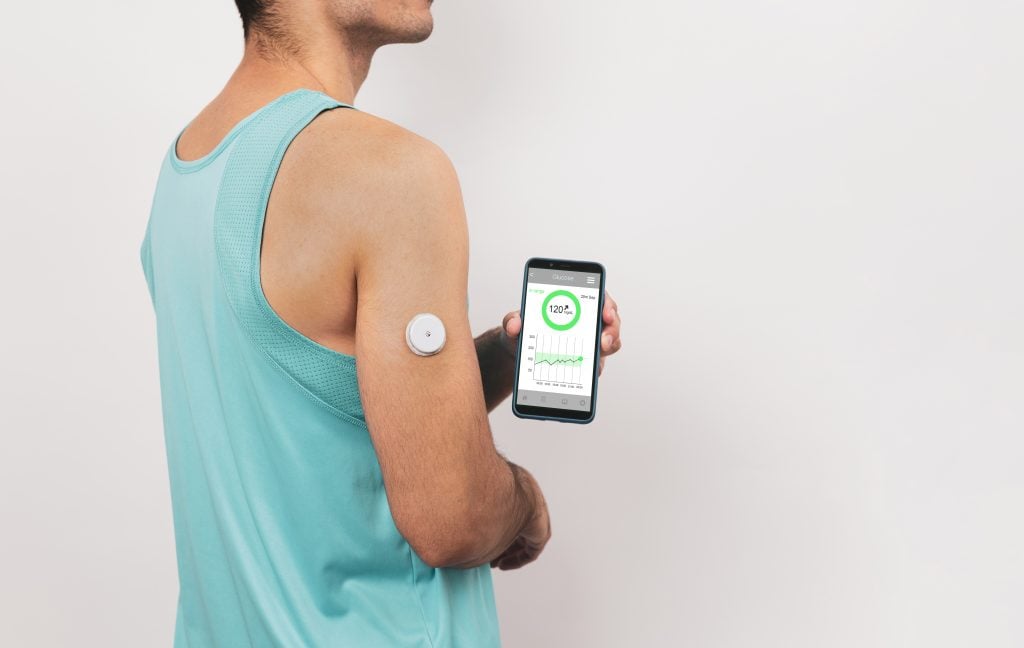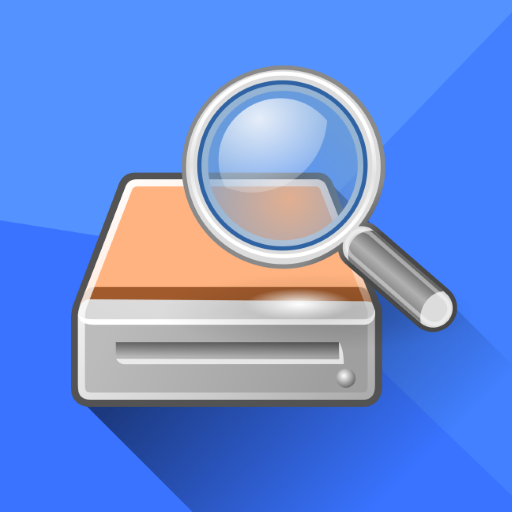Applications
DiskDigger App: One click to bring your photos back!
With the DiskDigger app, your deleted photos get a second chance! Simple, fast, and friendly to your most special memories.
Advertisement
Recover deleted memories with ease and a touch of digital magic.

The DiskDigger App is like a digital guardian of your memories, capable of rescuing photos that disappeared from your cell phone without warning.
With a simple interface, it scans every corner of your device to find deleted images, even those that seemed unreachable.
Its scanning technology offers fast and efficient results, returning valuable records in just a few moments, without any hassle for the user.
Want to discover a more practical way to find your next home? Discover Rent.com now and be amazed!
Meet DiskDigger Photo Recovery: Recover Deleted Photos and Files Quickly and Easily
The DiskDigger lost photo recovery app is the ideal solution for anyone who has deleted images by mistake and doesn't want to let special memories disappear forever.
With just a few taps, DiskDigger locates deleted files and restores valuable moments, making the process simple even for those who aren't very tech-savvy.
Its intelligent scanning identifies photos, videos, and other files, offering a fast and effective way to restore important memories directly to your device.
Whether it's a misclick or a phone problem, you can count on this tool to save memories that seemed lost, keeping your heart at peace.
How DiskDigger Works
The Lost Photo Recovery App works by analyzing your device's memory to identify data that can still be restored, even after apparent deletion.
It uses different scanning modes to locate images, videos, and other files, allowing users to retrieve important memories.
Basic Scan vs. Deep Scan
The DiskDigger App's basic scan is ideal for quick searches, checking accessible areas of memory, and finding recently deleted files.
Deep scanning performs a thorough scan, exploring hidden and unindexed sectors, significantly increasing the chances of recovering old files.
In basic mode, execution is faster and consumes fewer resources, being useful when the objective is just to locate recently deleted files.
Deep mode takes more time, but rewards with comprehensive results, making it perfect for those searching for files that have been lost for weeks or even months.
Difference in results with and without root
Without root, the app has limited access, only finding data stored in open areas of the system, such as cache and recent photo thumbnails.
With root, access is complete, allowing you to examine protected sectors of the system and locate deleted files in virtually any part of the internal memory.
The difference in results is significant: with root, even old and fragmented files can be identified and restored, expanding recovery possibilities.
On the other hand, rooting requires caution, as it can affect the device's warranties and security, and should only be considered by experienced users.
Supported file types for recovery
The DiskDigger app isn't just limited to images; it can also restore deleted videos, documents, audio files, and even APK packages.
Supported formats include JPEG, PNG, MP4, MOV, MP3, PDF, DOCX, XLSX, ZIP, and more, covering most popular file types.
This means that, in addition to photos, you can recover important work, audio recordings, and even applications that have been accidentally uninstalled.
This versatility makes the tool useful for different needs, from personal use to professional situations where data recovery is essential.
Step by step guide to recover photos in DiskDigger
The Lost Photo Recovery App helps anyone rescue important memories in just a few taps, making the process simple and accessible to everyone.
With an intuitive interface, it guides the user from search to final restoration, ensuring fast results without unnecessary technical complications.
Download and installation
Downloading and installing DiskDigger is quick and easy, allowing you to start recovering lost files on your device within minutes.
- Go to the Google Play Store and search for “DiskDigger” to find the official version of the application.
- Click the button "Install" and wait for the download to complete on your smartphone or tablet.
- After installation, open the application and grant the requested permissions for access to memory and storage.
- Choose between the free or Pro version depending on your file recovery needs.
The app is now ready to use, allowing you to recover lost photos and other files with just a few taps and complete convenience.
Configuring file search
When you open the DiskDigger application, select the location where you want to search for deleted files, such as internal memory or external memory card.
Select whether you want to perform a quick or deep scan, depending on the urgency and the time available to wait for the process.
Choose the file types you want to find, filtering by images, videos, documents, or other formats supported by the app to speed up your search.
Confirm your choices and start the scan, allowing the app to carefully analyze all selected sectors to identify files that can still be recovered.
Safely Saving Recovered Files
After locating the desired photos, the DiskDigger App offers options to save the recovered files in safe locations, avoiding overwriting important data.
Ideally, you should store the restored content in a different folder or on an external device, such as a USB flash drive or SD card.
You can also upload files directly to cloud services, ensuring remote access and automatic backup to prevent future loss.
Always check recovered files before discarding or overwriting them, making sure they are in good quality after the restoration process.
Additional DiskDigger Features and Functionality
The Photo Recovery App offers extra features like preview, cloud upload, and security tools, ensuring your files are protected.
With preview, you can check each item before recovery, saving space and keeping only the photos and videos that really matter on your device.
Direct upload to the cloud facilitates automatic backups and quick sharing, keeping recovered files safe and accessible from anywhere.
Wipe tools protect your privacy by permanently erasing data and preventing it from being restored by third parties, ideal for those who are selling their device.
Advantages and Disadvantages of DiskDigger
The Photo Recovery App offers useful features for restoring deleted files, but like any tool, it has strengths and limitations to consider.
Knowing the advantages and disadvantages helps you decide if it's truly the best solution for your specific file and photo recovery needs.
Positive points of the application
The DiskDigger app stands out for its ease of use, allowing even beginners to recover deleted files quickly without technical complications.
Support for a variety of file formats, including photos, videos, and documents, expands recovery options and makes the app more versatile.
The preview option ensures that only desired files are restored, saving space and avoiding saving low-quality or duplicate items.
The ability to save files directly to the cloud provides extra security, ensuring remote access and immediate backup to prevent further data loss.
Common limitations and challenges
Without root, recovery is limited to accessible areas, leaving older or protected files out of the app's reach.
Deep scanning, while efficient, can be time-consuming, especially on devices with large storage capacities or many deleted files.
Not all recovered files will be of perfect quality, especially if some of the data has been overwritten after the initial deletion.
In some cases, the user may need basic technical knowledge to take full advantage of advanced features, such as use on rooted devices.
Tips for Maximizing Recovery in DiskDigger
Photo recovery app can achieve incredible results if the user takes some strategic steps right after accidentally deleting important files.
By following best practices, you can increase your chances of recovery, avoid loss of quality, and make the most of all the features available in the application.
What to do immediately after deleting photos
If you realize you've deleted an important photo, stop using your device immediately to prevent new data from overwriting the deleted file.
Open the DiskDigger application as soon as possible and start a quick or deep scan, increasing the chances of finding the image still intact.
Avoid installing new apps or downloading new apps, as these actions can take up the space where the photo was stored, making it impossible to recover.
Always keep the app installed on your phone beforehand to act quickly if you accidentally delete photos or other important files.
Precautions to avoid overwriting
Overwriting occurs when new data takes up the space left by the deleted file, making it unrecoverable even for advanced recovery software.
To avoid this, immediately stop activities such as taking photos, recording videos, downloading files, or updating apps on your device.
Prefer to carry out the recovery process in a calm, unhurried environment, to follow all the steps correctly and without harmful errors.
When saving recovered files, always choose a different location than the original location to prevent data from being overwritten during the process.
Using root for greater efficiency
With root access, the DiskDigger App can explore restricted areas of the system, recovering older files and increasing the chances of success.
The rooting process, however, requires care and technical knowledge, as it can void warranties and affect the security of the device.
For those looking for more comprehensive results, this option offers a deep scan that goes beyond the areas accessible to standard applications.
Before rooting, research the procedure for your specific phone model and back up important data to avoid loss.
DiskDigger Security and Privacy
The photo recovery app not only restores images but also takes measures to ensure the security and privacy of users.
Understanding how the app handles data and permissions helps you use it with confidence, taking advantage of its features without compromising important personal information.
Data collection policy
The DiskDigger App maintains a clear privacy policy, stating that it does not collect personal information without the user's direct consent.
Data processed during recovery is stored only locally on the device, preventing unnecessary content from being sent to external servers.
This ensures greater control over files and reduces the risk of undue exposure, reinforcing confidence in using the application.
Before using, we recommend that you carefully read the available privacy policy to better understand how information is handled and protected.
Permissions requested by the app
The application requests access to both internal and external storage to scan and identify deleted files that can be restored.
On rooted devices, you may need to grant additional permissions, allowing access to protected areas of memory to improve recovery.
No permission is requested without prior explanation of its function, ensuring greater transparency in how the application works.
The user has full control to accept or deny permissions, adjusting them according to their preferences and security needs.
Best practices for protecting recovered files
The DiskDigger App offers features that help keep recovered files safe, preventing the risk of loss or unauthorized access.
Store restored files in secure locations, such as cloud services with two-factor authentication or secure external drives.
Avoid keeping sensitive copies on your own device, especially if it is shared with others or used in public environments.
Make regular backups and use strong passwords to protect your data, ensuring that your recovered memories remain safe for a long time.
Conclusion
DiskDigger has proven to be a practical solution for those looking to restore deleted photos and files, combining efficiency, useful features and easy usability.
With its additional features, it goes beyond basic recovery, allowing you to protect data, prevent future loss, and better organize restored files.
The application serves both beginners and advanced users well, offering simple or advanced options depending on the needs of each situation.
Did you like it? Want to learn about another incredible tool for restoring deleted files? Check out the next article for everything you need to know about the Dumpster app and expand your digital possibilities.
Dumpster App
Discover in the next article how the Dumpster app can store your deleted photos like a vault, ready to retrieve value whenever you need it.
Trending Topics

Find out how to watch Paulistão games live right now!
To be able to follow Paulistão games live, you need to know these websites and apps to watch the matches.
Continue lendo
How to Create New Habits: For a Successful New Year
Transform your life and achieve your goals with mastery by learning the secrets of how to create new habits. Read now!
Continue lendo
Meet the Argentine team, favorites for the World Cup
Meet the Argentine favorite, with an unbeaten run of 35 games, the team is here to fight for the cup.
Continue lendoYou may also like

Check out how to watch football live on Globoplay
The Globoplay app is one of the best options for watching football, so see our article to stay tuned to your favorite team.
Continue lendo
Discover 5 apps to monitor glucose on your cell phone
Discover the application to monitor glucose and transform your cell phone into a platform with precision and convenience for managing diabetes.
Continue lendo
Behind the Scenes: Find out why Gabigol was not called up
Find out why Gabigol was not called up for the 2022 World Cup, and see how the player reacted.
Continue lendo